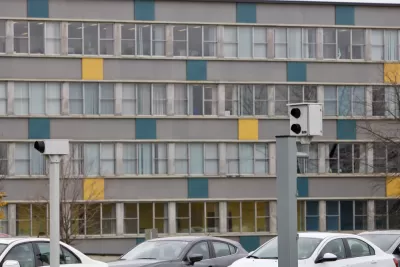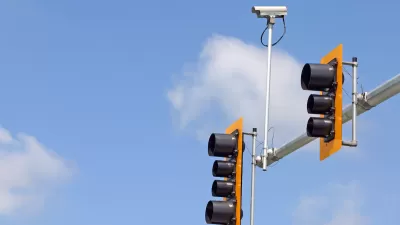Analysis of the automated enforcement program in Ottawa, Canada shows a significant drop in speeding near traffic cameras.

A recent study from Canada highlights the success of Ottawa’s automated traffic enforcement cameras, which, at one location near a school, quadrupled compliance with speed limits. Alistair Steele reports on the story for CBC News.
“Last month, the city announced plans to more than double the number of automated speed enforcement (ASE) cameras monitoring its roads in 2023 from 17 to 40, and to add up to 25 more annually until 2026, creating a web of ASE zones so vast that it could soon become difficult to drive from point A to point B in Ottawa without passing through at least one.” Rather than focusing on schools and parks, the new cameras will be located in “community safety zones” where speeding is a major problem.
In the United States, where traffic cameras are a contentious issue, more policymakers are recognizing their benefits. While proponents say the cameras can help limit interaction with police and improve road safety, critics caution that the programs can disproportionately impact people of color, in large part because low-income neighborhoods often lack safe infrastructure.
As Steele points out, Ottawa isn’t alone in its success with traffic cameras. “A systematic review published by the Cochrane Library in 2010 analyzed 35 separate studies from around the world and found average speeds in the vicinity of ASE cameras dropped by up to 15 per cent.” The same analysis also found a significant reduction in crashes, correlating with fewer injuries and deaths, near cameras.
FULL STORY: Here's the really annoying thing about speed cameras: They work

Planetizen Federal Action Tracker
A weekly monitor of how Trump’s orders and actions are impacting planners and planning in America.

Congressman Proposes Bill to Rename DC Metro “Trump Train”
The Make Autorail Great Again Act would withhold federal funding to the system until the Washington Metropolitan Area Transit Authority (WMATA), rebrands as the Washington Metropolitan Authority for Greater Access (WMAGA).

The Simple Legislative Tool Transforming Vacant Downtowns
In California, Michigan and Georgia, an easy win is bringing dollars — and delight — back to city centers.

The States Losing Rural Delivery Rooms at an Alarming Pace
In some states, as few as 9% of rural hospitals still deliver babies. As a result, rising pre-term births, no adequate pre-term care and "harrowing" close calls are a growing reality.

The Small South Asian Republic Going all in on EVs
Thanks to one simple policy change less than five years ago, 65% of new cars in this Himalayan country are now electric.

DC Backpedals on Bike Lane Protection, Swaps Barriers for Paint
Citing aesthetic concerns, the city is removing the concrete barriers and flexposts that once separated Arizona Avenue cyclists from motor vehicles.
Urban Design for Planners 1: Software Tools
This six-course series explores essential urban design concepts using open source software and equips planners with the tools they need to participate fully in the urban design process.
Planning for Universal Design
Learn the tools for implementing Universal Design in planning regulations.
Smith Gee Studio
City of Charlotte
City of Camden Redevelopment Agency
City of Astoria
Transportation Research & Education Center (TREC) at Portland State University
US High Speed Rail Association
City of Camden Redevelopment Agency
Municipality of Princeton (NJ)





























